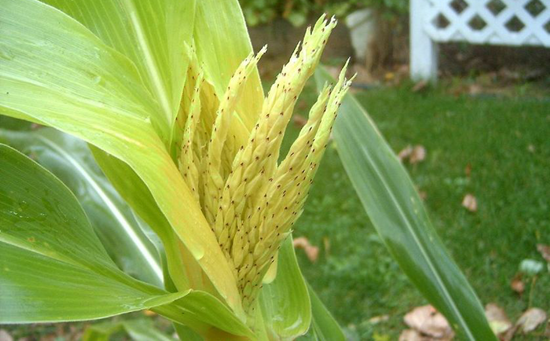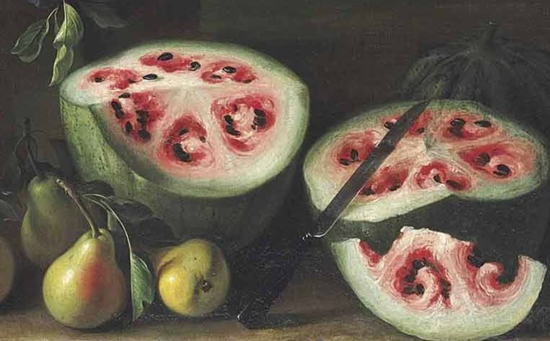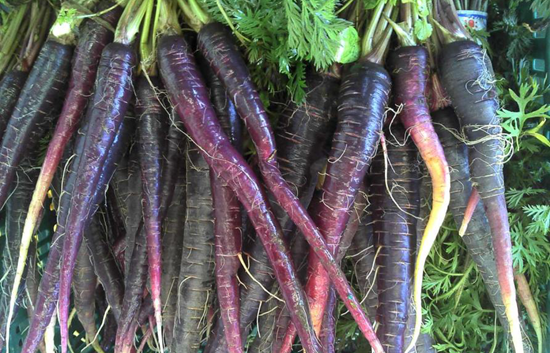
7 fruits and veggies that used to look a whole lot different than they do today
By Mary Jo DiLonardo, Mother Nature Network, 29 February 2016.
By Mary Jo DiLonardo, Mother Nature Network, 29 February 2016.
You walk through the produce section of your supermarket and everything looks so familiar. But the fruits and vegetables you see bear no resemblance to their ancestors from thousands of years ago. Most of them don't taste the same either.
Credit our forefathers who wanted bigger, tastier and more attractive food. We talk a lot about GMOs these days, but selective breeding has been around for a while.
"Genetically modified foods, or GMOs, inspire strong reactions nowadays," writes Tanya Lewis in Business Insider, "but humans have been tweaking the genetics of our favourite produce for millennia.
Here are seven fruits and vegetables as they look today and a peek at what they looked like many years ago.
1. Corn
Corn is everywhere, especially in the summertime. That doesn't mean we know exactly where it came from. "Despite its abundance and importance," says the New York Times, "the biological origin of maize has been a long-running mystery."
Some scientists eventually linked maize to a Mexican grass called teosinte. The grass has skinny ears with just a few dozen kernels inside a hard casing. In fact, writes the Times, teosinte was first classified as a closer relative of rice, rather than maize.
But George W. Beadle, a graduate student at Cornell University, not only found that maize and teosinte [pictured above] had similar chromosomes, he also was able to get teosinte kernels to pop. Beadle concluded the two plants were closely related (and later went on to win the Nobel Prize for his work in genetics.)
2. Watermelon
Another summer favourite, watermelon has been around for millennia, reports National Geographic. Archaeologists found watermelon seeds at a 5,000-year-old settlement in Libya. Paintings of watermelons (as well as actual watermelon seeds) have been discovered in Egyptian tombs built more than 4,000 years ago, including the tomb of King Tut.
Early watermelons likely didn't have the popular red flesh we know today. They were paler with less flesh and more seeds.
3. Banana
Several years ago, a study looked at the evolution of the popular, familiar yellow banana. It analyzed multidisciplinary findings from archaeology, genetics and linguistics to figure out when and where bananas came from.
Modern bananas evolved from two wild varieties: Musa acuminata which Smithsonian describes as "a spindly plant with small, okra-like pods that were bred to produce seedless fruit" and the heartier Musa balbisiana [pictured above], which had hard, large seeds. That wouldn't make it so easy to slice over your breakfast cereal.
4. Carrot
Bright orange and beloved by rabbits, horses and even small children, carrots are easy to grow and have been around for quite a while. They just didn't resemble their current form.
Photo: World Carrot Museum
Historians believe the ancient Greeks and Romans grew carrots, according to the virtual World Carrot Museum. Those early carrots [pictured above] were very thin and either an off-white or purple color. They typically had a forked root, like today's wild carrots.
5. Apple
The modern apple's ancestor looks relatively similar to what we find in supermarkets today. But the taste has certainly evolved over the years.
Photo: Global Trees Campaign
According to the Global Trees Campaign, Malus sieversii [pictured above] is a wild apple native to the mountains of Kazakhstan, Kyrgyzstan, Tajikistan, Uzbekistan and China. Research has shown that this fruit, also called the Asian wild apple, is one of the main forefathers of our domesticated apple. It's small and sour, unlike the sweet apples we eat today.
6. Tomato
There are many varieties of tomato in our gardens today, but historically people weren't so quick to eat this interesting fruit - that some consider a vegetable.
Early incarnations of the plant had tiny green or yellow fruit. It was used in cooking by the Aztecs, and later explorers brought the tomato back to Spain and Italy.
Although now a staple in those countries, Smithsonian says in the 1700s the tomato was feared and nicknamed "poison apple" because people thought aristocrats died after eating them. But it turned out it was the acidity in tomatoes leached lead from fancy pewter plates that was causing lead poisoning.
7. Eggplant
Now known for their deep aubergine colour, historically eggplants have had several hues including white, yellow, azure and purple. In fact the English name "eggplant" comes from the fact that the plants were often white and round. Some plants even had spines.
In the journal article "History and Iconography of Eggplant," the authors write, "Several Sanskrit documents, dated from as early as 300 BCE, mention this plant with various descriptive words, which suggest its wide popularity as food and medicine."
Watch the Business Insider video below for more interesting trivia about what's in your produce aisle:














No comments:
Post a Comment
Please adhere to proper blog etiquette when posting your comments. This blog owner will exercise his absolution discretion in allowing or rejecting any comments that are deemed seditious, defamatory, libelous, racist, vulgar, insulting, and other remarks that exhibit similar characteristics. If you insist on using anonymous comments, please write your name or other IDs at the end of your message.